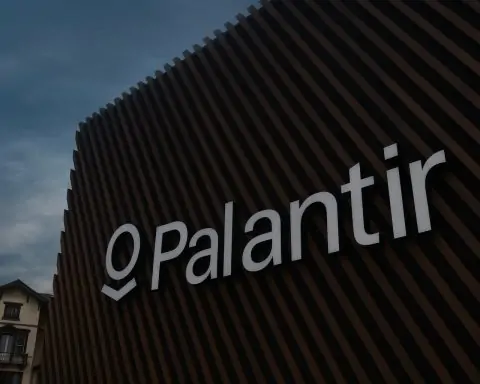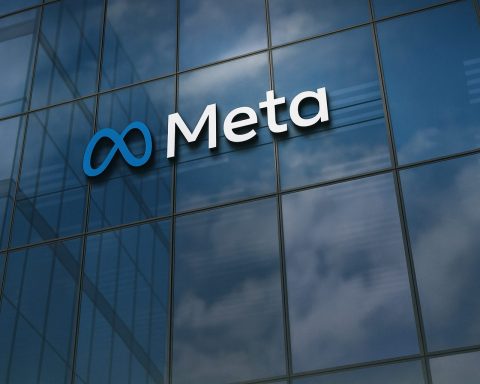Nvidia stock will head into Monday’s US session (November 24, 2025) after one of its most eventful weeks of the year – record earnings, swirling AI-bubble debates, fresh China export headlines, and another pullback in price. Here’s a clear, fact-based look at what traders and investors should know before the opening bell.
Note: All figures and prices are as of the close on Friday, November 21, 2025, unless otherwise stated. This article is for information only and is not financial advice.
1. Where Nvidia Stock Stands Going Into Monday
Nvidia (NASDAQ: NVDA) closed around $178.88 on Friday, down roughly 1% on the day and well off its recent highs. [1]
- Intraday on Friday, NVDA traded between $173.02 and $184.45, opening near $181.08 before fading into the close.
- The stock is still up over 30% year-to-date, despite the recent pullback. [2]
- It sits roughly 15–16% below its 52‑week high near $212, according to Finviz data, underscoring how much it has already cooled from its peak. [3]
After hours on Friday, MarketBeat data showed Nvidia ticking slightly higher to around $179.80, but still far from its recent all‑time highs. [4]
In other words: Nvidia is no longer priced at absolute euphoria, but it’s still a massively valued AI leader with huge expectations embedded in the stock price.
2. Earnings Recap: AI Demand Still Looks “Off the Charts”
Nvidia’s Q3 FY2026 earnings, reported on November 19, 2025, were spectacular on the headline numbers. [5]
Key figures from the quarter:
- Record revenue of $57.0 billion, up 22% quarter‑over‑quarter and 62% year‑over‑year. [6]
- Data center revenue of $51.2 billion, up 25% QoQ and 66% YoY, making up the vast majority of Nvidia’s business. [7]
- Gaming revenue of $4.3 billion, down 1% sequentially but up 30% from a year ago – still meaningful, but clearly no longer the main story. [8]
The company also raised the bar again on guidance:
- Nvidia’s outlook for the current quarter calls for around $65 billion in revenue, according to post‑earnings coverage, well above what many on Wall Street had penciled in. [9]
- CFO Colette Kress reiterated that Nvidia is “on track” for roughly $500 billion in AI chip orders across 2025–2026, framing the current boom as more than a short‑term spike. [10]
Crucially, Nvidia said its Q4 outlook assumes essentially no data‑center compute revenue from China, given current US export restrictions. [11] That means any future policy shift on China could be upside to existing guidance rather than baked in.
Overall, earnings reinforced the core bull case: AI data‑center demand remains extremely strong, and Nvidia continues to capture most of the economics.
3. China Export Controls: Big Risk, Big Optionality
China remains one of the biggest swing factors for Nvidia’s long‑term story – and this week brought several important policy headlines.
Possible Opening for H200 Sales to China
Reuters reported that the US is considering allowing Nvidia to sell its H200 AI chips to China under certain conditions, potentially loosening some of the strict export curbs introduced earlier in the AI chip crackdown. [12]
Separately, Bloomberg and the South China Morning Post reported that Trump administration advisers have internally floated the idea of selling Nvidia’s H200 chips to China, again suggesting the possibility of partial easing rather than further tightening. [13]
If even a portion of high‑end Nvidia GPUs can legally flow back into China, that could represent meaningful upside to revenue versus the company’s current, China‑excluded guidance.
White House Pushback on New Restrictions
On the other side, policy hawks in Congress have been pushing the GAIN AI Act, which would force chipmakers like Nvidia to prioritize US buyers and further constrain exports.
But multiple reports indicate the White House is actively urging Congress to reject the bill and keep tougher restrictions out of the annual defense authorization package, arguing it could harm US competitiveness. [14]
For Nvidia shareholders, that’s incrementally positive: the most restrictive proposal faces resistance from the administration.
Smuggling Case Highlights Ongoing Risk
At the same time, the US government is tightening enforcement. Federal prosecutors recently charged four individuals with smuggling Nvidia GPUs and HP supercomputers containing Nvidia chips to China, allegedly using shell companies and fake documents to evade export controls. [15]
Nvidia noted that building functional datacenters from smuggled parts is difficult and that it doesn’t service restricted products, but the case underscores:
- Export controls are not going away, and
- Policy headlines can swing sentiment quickly.
Bottom line for Monday: China remains both a tail risk (if rules tighten again) and a call option (if H200 sales or future Blackwell shipments into China get official approval).
4. Wall Street’s Take: Price Targets Keep Marching Higher
Despite the recent pullback, Wall Street remains overwhelmingly bullish on Nvidia.
Following Q3 earnings, major firms have raced to raise their price targets: [16]
- Morningstar lifted its target to around $240. [17]
- Jefferies went to about $250, with upside scenarios pointing even higher. [18]
- Truist Securities moved its target to $255 and reiterated a Buy rating. [19]
- Melius Research set a street‑high target near $320, framing Nvidia as the key winner in a “massive technological paradigm shift.” [20]
- Evercore ISI has gone further, suggesting Nvidia stock could climb toward $352 on sustained demand for its Blackwell chips. [21]
Across the broader analyst community:
- Around 40+ analysts tracking NVDA currently rate it a “Strong Buy”, with an average 12‑month target around $240–$260, implying roughly 30–35% upside from Friday’s close. [22]
Some bullish commentary even talks about Nvidia reaching a $6 trillion market cap in the next 12–18 months if AI demand holds up, according to Wedbush analysis. [23]
For Monday’s open, that backdrop means sell‑side sentiment is still strongly on Nvidia’s side, even as short‑term traders focus on volatility and valuation.
5. Skeptics Get Louder: AI Bubble Fears and High‑Profile Exits
The bull case is dominant, but vocal skeptics have not gone away – and some have become louder after the latest earnings.
Michael Burry’s Bearish View
Michael Burry, of “The Big Short” fame, has been openly critical of Nvidia and the AI boom. In recent commentary, he: [24]
- Compared the current AI surge to prior market bubbles,
- Questioned how AI-related hardware is being depreciated and accounted for on corporate balance sheets, and
- Highlighted his own large put option positions against Nvidia and other AI plays such as Palantir.
Burry argues that some AI equipment may be over‑used in accounting terms but under‑profitable in economic terms, especially when energy and infrastructure costs are considered.
Big Money Taking Profits
High‑profile investors have also been locking in gains:
- Peter Thiel’s hedge fund Thiel Macro sold its entire Nvidia position (about 537,000 shares) ahead of the Q3 report. [25]
- SoftBank reportedly unloaded a multi‑billion‑dollar Nvidia stake earlier this year, partly to reallocate capital into OpenAI. [26]
These moves feed the narrative that smart money is trimming exposure to AI high‑flyers after enormous gains.
Rising Short Interest – But Still Low Overall
Short interest data shows more traders are betting against NVDA, even if the absolute level remains modest:
- As of October 31, 2025, Nvidia had around 238.6 million shares sold short, roughly 1.02% of its public float, up about 13% from the prior report. [27]
- The days-to-cover ratio is around 1.3–1.4, meaning it would take just over a day of normal trading volume for short sellers to buy back their shares. [28]
So while more participants are leaning bearish at the margins, Nvidia is far from a heavily shorted stock.
6. Options and Volatility: Market Still Pricing Big Swings
Nvidia’s options market has been one of the most active in the world this month.
Before earnings, Reuters reported that options were implying about a 7% move in either direction, translating to a potential $320 billion swing in market value, one of the largest post‑earnings setups in history. [29]
Post‑earnings:
- 30‑day implied volatility (IV30) remains elevated around 50%, according to multiple volatility trackers. [30]
- One options analytics site shows that as of November 21, 2025, Nvidia’s options had an IV above 50% with volume about 200% of average daily levels – roughly 6.4 million contracts in a single day. [31]
- MarketChameleon data highlights very heavy trading in $200 call options after earnings, as traders positioned for further upside while implied volatility fell from pre‑earnings extremes. [32]
For Monday, this matters because:
- High implied volatility means the market still expects large daily moves, even after the earnings catalyst, and
- The options market does not tell you direction – only that both upside and downside tails are priced as unusually likely.
Short‑term traders going into Monday’s session need to understand that NVDA remains a high‑volatility, high‑gamma stock: small news items can trigger outsized price reactions.
7. Fundamentals and Valuation: Still a High‑Expectation Story
Nvidia’s fundamental performance is astonishing, but so is the valuation.
From recent financial and valuation data: [33]
- Trailing multi‑year revenue growth has averaged around 60–70% annually, and earnings per share growth is even faster.
- Gross margins hover near 70%, reflecting Nvidia’s pricing power in high‑end AI GPUs. [34]
- The company’s EV/EBITDA multiple is above 35, and it trades at a significant premium to most other large semiconductor names. [35]
Segment-wise:
- Data center is now the core business, contributing well over 80% of total revenue. [36]
- Gaming remains profitable but less central to the investment thesis. [37]
- Automotive and robotics revenue, while still small at under $1 billion per quarter, is growing more than 30% year‑over‑year and seen as a future growth vector. [38]
This combination – hyper‑growth plus premium valuation – is exactly why investors are so sharply divided:
- Bulls argue that Nvidia’s dominance in AI chips and software justifies a long stretch of premium multiples. [39]
- Bears counter that any slowdown in AI capex, new export limitations, or stronger competition (from AMD or custom chips designed by big cloud providers) could make today’s multiples look excessive.
Going into Monday’s open, the market will still be re‑pricing those long‑term expectations in light of the latest earnings and policy news.
8. Macro and Sector Backdrop: A Shaky Market Around a Strong Stock
It’s not just about Nvidia; the broader market context matters too.
MarketWatch noted that even Nvidia’s blowout quarter could not rescue an equity market facing mounting pressures. The S&P 500 has been stuck in a wide range, market breadth has deteriorated, and the VIX has spiked above 26, signaling stress. [40]
At the same time:
- AI and semiconductor names broadly rallied after Nvidia’s results, with Nvidia often described as the “barometer” of the AI trade. [41]
- Nvidia continues to sign big, real‑economy deals, such as its partnership with South Korea’s government, Samsung, SK Hynix, and Hyundai to supply around 260,000 GPUs for national AI infrastructure – evidence that AI GPU demand is not just a trading narrative. [42]
In a fragile macro environment, Nvidia’s earnings strength is a bright spot, but its sheer size and volatility mean it can also amplify market swings, especially in tech‑heavy indices like the Nasdaq.
9. Key Things to Watch for Nvidia at the Open on November 24, 2025
Here are concrete factors traders and investors may monitor when markets open on Monday:
- Price Action Around Friday’s Range
- Watch how NVDA trades relative to the $173–$185 band from Friday’s session. A decisive break below the low end could embolden bears; strength back toward $185 and above may signal dip‑buying.
- Fresh Headlines on China and Export Policy
- Any new detail on potential H200 licenses to China or the fate of the GAIN AI Act could move the stock quickly. Recent headlines have come in rapid succession, and policy risk is front and center. [43]
- Options and Implied Volatility Reaction
- Monitor whether implied volatility stays high or compresses further now that earnings are out. Elevated IV around 50% suggests big intraday moves are still on the table. [44]
- Flows From Big Funds and ETFs
- Given its enormous market cap and heavy weight in major indices, Nvidia is highly sensitive to index flows, macro ETF positioning, and factor rotations (e.g., into or out of growth and tech).
- Sentiment Split Between Bulls and Bears
How this sentiment clash plays out in early trading could set the tone for the week.
10. How Different Types of Investors Might Frame Nvidia Now
Again, this is not advice, but here’s how different market participants often frame a stock like Nvidia in a moment like this:
- Long‑term growth investors
Might focus on whether the latest earnings and guidance reinforce the multi‑year AI thesis – particularly Nvidia’s dominant position in data‑center GPUs, its software ecosystem (CUDA), and long pipeline of projects like Blackwell‑powered systems, automotive platforms, and industrial AI clouds. [47] - Short‑term traders
Are likely to focus on price levels, headline risk, and options skew – trying to exploit the elevated volatility and rapid news flow around export policy and AI spending. [48] - Risk‑averse or income‑oriented investors
May see Nvidia as too volatile or richly valued in the near term and prefer to watch from the sidelines or gain exposure via more diversified vehicles.
Whatever your approach, the key is to align any decision with your own time horizon, risk tolerance, and diversification needs – and to remember that even the most dominant growth stories can be extremely volatile along the way.
Final Word
As the market opens on Monday, November 24, 2025, Nvidia sits at the center of three powerful forces:
- Explosive AI‑driven growth, confirmed by record‑shattering earnings and robust guidance. [49]
- Shifting geopolitical and regulatory winds, especially around China export policy and US chip legislation. [50]
- A polarized market narrative, with Wall Street analysts raising targets even as prominent skeptics warn of an AI bubble and options markets price in ongoing turbulence. [51]
That combination virtually guarantees more volatility ahead. For anyone watching NVDA tomorrow, the most important thing may not be whether the stock ticks up or down at the open – but how it trades as new information and sentiment shocks hit a market that’s still trying to decide just how big the AI story really is.
References
1. finviz.com, 2. finviz.com, 3. finviz.com, 4. www.marketbeat.com, 5. nvidianews.nvidia.com, 6. nvidianews.nvidia.com, 7. nvidianews.nvidia.com, 8. nvidianews.nvidia.com, 9. www.businessinsider.com, 10. www.businessinsider.com, 11. www.businessinsider.com, 12. www.reuters.com, 13. www.bloomberg.com, 14. dig.watch, 15. www.theverge.com, 16. www.businessinsider.com, 17. www.businessinsider.com, 18. www.businessinsider.com, 19. www.barrons.com, 20. www.businessinsider.com, 21. m.economictimes.com, 22. stockanalysis.com, 23. www.businessinsider.com, 24. www.businessinsider.com, 25. www.investopedia.com, 26. www.investopedia.com, 27. www.marketbeat.com, 28. www.marketbeat.com, 29. www.reuters.com, 30. fintel.io, 31. optioncharts.io, 32. marketchameleon.com, 33. finviz.com, 34. finviz.com, 35. finviz.com, 36. nvidianews.nvidia.com, 37. nvidianews.nvidia.com, 38. www.tomshardware.com, 39. seekingalpha.com, 40. www.marketwatch.com, 41. finance.yahoo.com, 42. apnews.com, 43. www.reuters.com, 44. fintel.io, 45. nvidianews.nvidia.com, 46. www.businessinsider.com, 47. nvidianews.nvidia.com, 48. optioncharts.io, 49. nvidianews.nvidia.com, 50. www.reuters.com, 51. www.businessinsider.com







